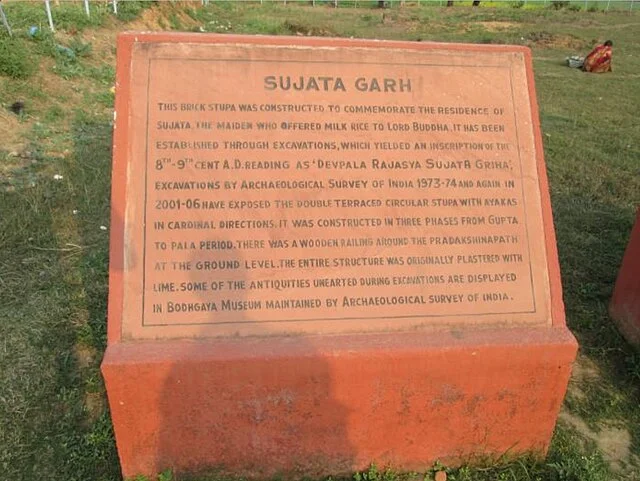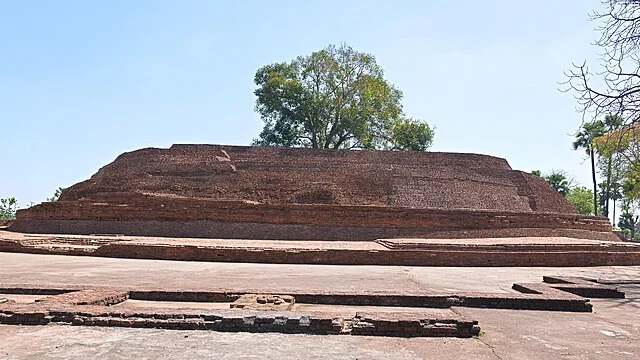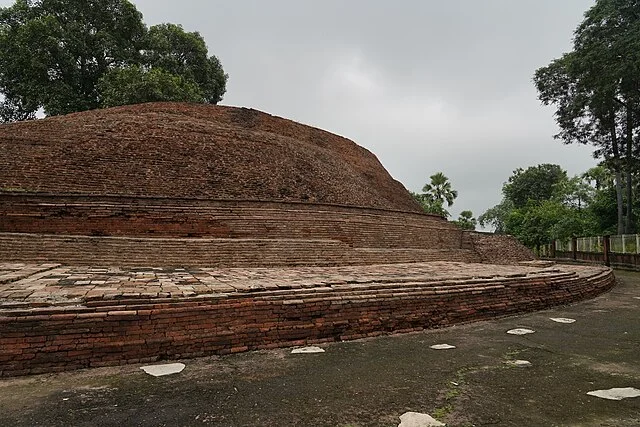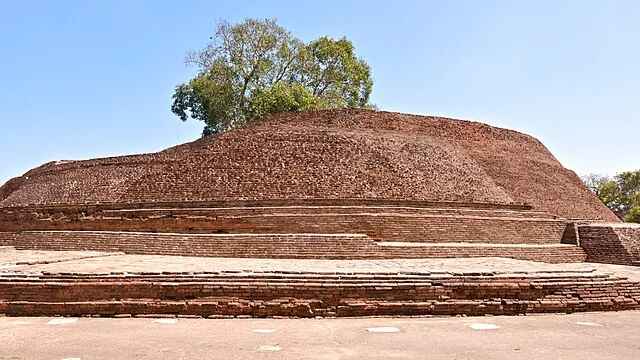Sujata Stupa is a significant Buddhist site located near Bodh Gaya, India. It commemorates Sujata, a village woman who is said to have offered a meal to Siddhartha Gautama before his enlightenment. According to Buddhist tradition, this act of kindness helped Siddhartha regain his strength and continue his meditation, eventually achieving enlightenment and becoming the Buddha. The stupa marks the site where Sujata made this offering, which is considered an important moment in the Buddha’s life.
Get your dose of History via Email
Architectural Features

Sujata Stupa was built during the Gupta period (320-550 AD), a time when Buddhism flourished in India. The original structure likely had a hemispherical dome, typical of early stupas. Today, the stupa is in a state of ruin, with much of the original structure eroded over time. However, archaeological excavations have revealed its layout and helped scholars understand its significance.
Archaeological Significance

In the late 19th century, the Archaeological Survey of India conducted excavations around Sujata Stupa. These efforts unearthed pottery, brickwork, and other artifacts. The site offers insights into the spread of Buddhism during the Gupta era. Additionally, the stupa is part of a broader network of religious sites in the Bodh Gaya region, which is central to Buddhist history.
Religious Importance
Sujata Stupa continues to hold religious importance for Buddhists worldwide. Pilgrims visit the site as part of their journey to Bodh Gaya. The stupa symbolizes compassion and the role of generosity in the spiritual journey. Moreover, it serves as a reminder of the Buddha’s human struggles and the support he received from ordinary people like Sujata.
Preservation Efforts

Although Sujata Stupa is in a fragile state, preservation efforts have been made to protect the site. The Archaeological Survey of India has taken steps to prevent further erosion. However, the site remains vulnerable due to environmental factors and human activity. Continued conservation work is needed to maintain the integrity of this historical monument.
In conclusion, Sujata Stupa is a historically and religiously significant monument. It stands as a testament to the life of the Buddha and the early spread of Buddhism in India. Its preservation remains crucial for future generations to appreciate this link to an important chapter of human history.
Source:

